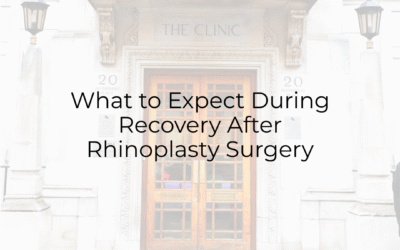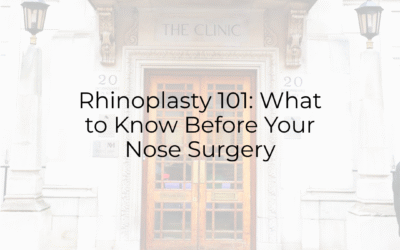Ears play a significant role in framing our face and contribute to our overall appearance. For many people, the size, shape, or condition of their ears can be a source of confidence or, conversely, self-consciousness. Whether dealing with the effects of an injury, genetics, or the natural aging process, various surgical procedures are available to address these concerns.
This guide will walk you through some of the most common types of ear surgeries. We will explore what each procedure entails, who it’s for, and what you can expect during recovery. From repairing a torn earlobe to reshaping the entire ear, modern plastic surgery offers effective solutions.
Ear Lobe Repair: Restoring Form and Function
Earlobe repair is a straightforward procedure designed to correct torn, stretched, or split earlobes. These issues are surprisingly common and can result from several causes.
Why Is Earlobe Repair Needed?
The most frequent reason for earlobe repair is trauma from earrings. A heavy earring can gradually stretch the piercing hole over time, eventually leading to a complete tear. An earring can also get caught on clothing or pulled accidentally, causing a sudden split. The trend of “gauging,” or intentionally stretching the earlobes with large-diameter jewelry, also leads many to seek repair surgery to restore a more conventional appearance.
The Procedure and Recovery
Earlobe repair is typically a quick, in-office procedure performed under local anesthesia. The surgeon numbs the earlobe, so you feel no pain. They then carefully remove the damaged skin around the split or stretched hole and meticulously stitch the fresh edges together. This process creates a clean line that heals with a minimal scar.
Recovery is relatively simple. The stitches are usually removed within one to two weeks. You can expect minor swelling or bruising, but discomfort is easily managed. Most people can return to their daily activities immediately. It is generally recommended to wait at least three months before re-piercing the ear to ensure it has fully healed.
Ear Lobe Reduction: Achieving Balance
As we age, our skin loses elasticity, and gravity takes its toll. For some, this results in elongated or droopy earlobes that can look out of proportion with the rest of the ear. Earlobe reduction surgery addresses this by removing excess skin and reshaping the lobe for a more youthful and balanced look.
Who Benefits from Earlobe Reduction?
This procedure is ideal for individuals who feel their earlobes are disproportionately large, whether due to aging or genetics. If you find yourself hiding your ears because you are unhappy with the size of your lobes, this surgery can provide a significant boost in confidence.
The Procedure and Recovery
Similar to earlobe repair, a reduction is also performed under local anesthesia. The surgeon makes a small incision, removes a wedge of skin and tissue, and then carefully sutures the lobe into a smaller, more refined shape. The goal is to create a natural-looking result that complements your facial features.
Recovery involves minimal downtime. You will need to keep the area clean and dry, and the stitches are typically removed after about a week. The resulting scar is usually well-hidden in the natural crease of the earlobe, becoming nearly invisible over time.
Otoplasty: Correcting Prominent Ears
Otoplasty, commonly known as ear pinning, is a surgical procedure to change the shape, position, or size of the ears. It is most often performed to correct ears that stick out too far from the head, a condition often referred to as “prominent ears.”
Who Is a Good Candidate for Otoplasty?
Otoplasty can be performed on both children and adults. For children, it is often done between the ages of five and seven, when the ears have reached about 90% of their adult size. Correcting prominent ears at a young age can help prevent potential teasing and bullying at school.
Adults who have always been self-conscious about their ears are also excellent candidates. The procedure can also correct other issues, such as overly large ears (macrotia) or ears with an abnormal shape due to injury or a birth defect.
The Otoplasty Procedure
Otoplasty is a more involved surgery than earlobe procedures and may be performed under general anesthesia or local anesthesia with sedation. The surgeon makes an incision on the back of the ear, allowing access to the cartilage. They then reshape or remove cartilage as needed to create a more desirable shape and position the ear closer to the head. Permanent internal stitches are used to hold the cartilage in its new form.
Recovery from otoplasty requires more care. After surgery, your head will be wrapped in a bulky bandage to protect the ears and promote healing. This is usually replaced with a lighter, headband-style dressing after a few days. You will need to wear this headband, especially at night, for several weeks to prevent the ears from being pulled forward during sleep. Most patients can return to work or school within a week, but strenuous activities and contact sports should be avoided for about a month.
Comprehensive Cosmetic and Corrective Ear Surgery
The field of ear surgery, or otoplasty, extends beyond just pinning prominent ears or repairing lobes. It encompasses a wide range of procedures aimed at correcting structural abnormalities, whether they are congenital (present at birth) or the result of trauma.
Types of Corrective Procedures
Cosmetic and corrective ear surgery can address many different concerns, including:
- Constricted Ears: Also known as “lop” or “cup” ears, where the upper rim of the ear is folded over or appears tight.
- Microtia: A complex congenital deformity where the external ear is underdeveloped and smaller than normal. This often requires a multi-stage reconstructive process.
- Shell Ear: The curve in the outer rim, as well as the natural folds and creases, are missing.
- Post-Trauma Reconstruction: Rebuilding parts of the ear that have been damaged by accidents, burns, or other injuries, including “cauliflower ear” common in wrestlers and boxers.
These surgeries are highly specialized and tailored to the individual’s specific needs. The techniques can range from cartilage sculpting to using skin grafts or even ribbed cartilage implants to reconstruct the ear’s framework. The ultimate goal is to create an ear that appears as natural as possible and is in harmony with the patient’s other features.
Making an Informed Decision
Choosing to undergo any type of ear surgery is a personal decision. The first step is to book a consultation. We can assess your unique anatomy, discuss your goals, and recommend the best course of action to help you achieve the results you desire. With the right approach, ear surgery can be a life-changing procedure that enhances both your appearance and your self-esteem.



